Memorials, Scholarships and Prizes
The toll of the First World War fell not only on the 536 Old Alleynians honoured on the College War Memorial and on this website but also on many of the 2,500 OAs who returned but broken in mind or body. Despite these heavy losses some good did emerge in the form of scholarships and prizes which are still awarded today and through which their sacrifices are honoured and remembered and the achievements of later generations recognised.
The College was not new to war memorials. In April 1901, a letter from F A Rehder, OA, was read at a meeting of the Board of Governors explaining that the Alleyn Club wanted to commemorate the nine old boys who have fought and fallen in the Second Boer War by building a School Library. The library was to be paid for by subscriptions from members of the Club. The Master, HA Gilkes, suggested that the names of donors should be printed in The Alleynian to encourage others. The Library was designed by Edwin Hall (1851–1923), a parent and local resident who also designed the Jacobean extension to Liberty’s in Regent Street. Known nowadays as the Old Library, it was opened in 1903 as the South African Memorial Library. It stands by the gate onto Dulwich Common and was the first purpose built school library at the College.

By the time the ink was drying on the Treaty of Versailles in 1919, the College was already considering how to commemorate appropriately those who had made the ultimate sacrifice in the Great War. Two ideas were proposed, again very much led by the Alleyn Club and the then secretary McCulloch Christison. The first was for a printed Roll of Honour which would contain the names of all the Alleynians who had served in the war, together with staff. In addition there would be obituaries and photographs of all those who had died. The second scheme was for a Memorial Cross, to be erected in the College grounds under which the names of the dead would be engraved.
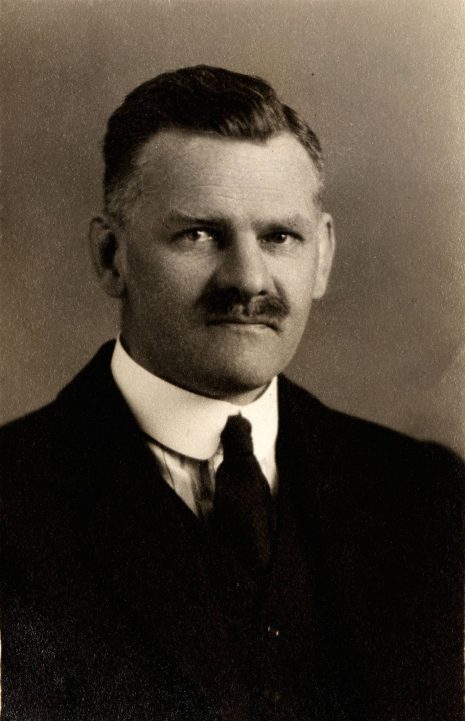
McCulloch Chritison Old Alleynian known as ‘slaker’
Christison set to work with his usual speed and efficiency. At some point in his life he had been given the ironic nickname of Slacker. He had already been keeping abreast of the doings of his contemporaries through his own personal correspondence. Captain H F Hose, who commanded the school OTC (now known as the CCF) during the war, had maintained a roll of old boys who were serving. These lists were periodically publishing as an addendum to The Alleynian. The school magazine had also published obituaries of the dead, as soon as the College was notified of their death. Building on this groundwork, Christison wrote to the friends and families of those who had served asking for news. The biographical portion of the Dulwich College War Record 1914-1919 was compiled using this information. The book was finally published in May 1923 and in its turn has become the starting point for this website.
There was much debate about how the dead were to be memorialised. It is interesting to note that the discussions revolved around three main ideas. Firstly a building – either a Chapel or a new school hall. The original 1616 Christ’s Chapel of God’s Gift in Dulwich village was still used by the College.
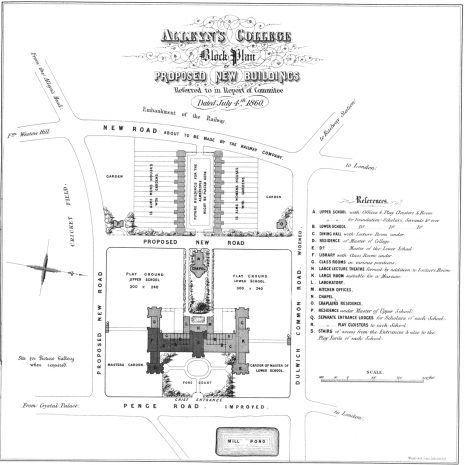
Charles Barry Jr’s Original plan for the New College included a chapel.
The 1866-70 Barry design for the New College on Dulwich Common include a chapel at the end of an avenue of trees in place of the Clump, but was never realised. By 1919 the Great Hall was already too small to support all the functions of assembly hall, dining room, concert auditorium, theatre and examination hall for the whole school. The second idea was for a memorial and the last for financial assistance to educate the sons of Old Alleynians who had died. The later idea was strongly supported by Edwin T. Hall, architect of the South African Memorial Library, who argued that the best memorial would be free places for fatherless sons – ‘boys, good, bad or indifferent’. Early on in the war the Governors did introduce half-fees for sons who had lost Old Alleynian fathers in the War. This was increased in 1917 to all fees and exemption from the entrance fee. In 1919, the tercentenary year of the College Foundation, the Alleyn Club voted as follows for the type of memorial: 277 for a Chapel, 170 for a monument, and 45 for a Hall. By 1920, only £7,000 had been raised which forced their hand in favour of a Memorial monument. In total, the Alleyn Club determined on the continued provision for dependants, a Memorial and three School scholarships.
There were, in addition, other prizes, awards and scholarships named after those who fought and died in the First World War, and which would form a lasting memorial to their sacrifice. Some were established at Dulwich College and were intended to benefit Alleynians, while others were founded elsewhere which spread the benefit further afield.
In some instances, and not surprisingly, many of the memorial prizes were to uphold and celebrate the military aspects of College life. Two OAs, Lt CC Howard and Lt RBB Jones VC, are remembered in the Howard Jones Shooting Trophy. They were both good marksmen and had represented the College at Bisley in the Shooting VI. Sadly this is no longer awarded as the College lost its shooting range to Nazi bombing in the Second World War, although the CCF still learn to shoot and participate in shooting competitions. In 2018 the College won the London District CCF Shooting Competition and WOI (RSM) Sebastian Connor was award ‘Best Shot’. In 2019 WOI (RSM) Charlie Luckhurst was also award ‘Best shot’ and, in addition, Dulwich College became the London District Shooting Champions as it won both the CCF and ACF (Air Cadets) combined competition. 2019 was the first time this combined competition was held.
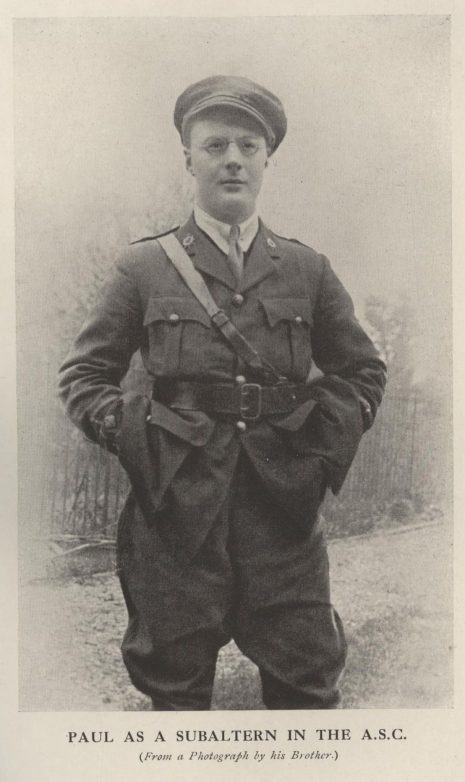 Another Jones, Paul Jones whose letters home from the First World War were posthumously published by his father, is immortalised by the Paul Jones Essay Prize. Founded in October 1918 by Mr and Mrs Harry Jones in memory of their son, Henry Paul Mainwaring Jones, known as Paul, who was at the College from 1908 to 1915. Originally there were two prizes, one for an essay on English literature and the other for an essay on European history. The latter is now awarded to the top Historian in the Remove (Year 12). Paul Jones had been on the Modern Side at Dulwich and was the Brackenbury Scholar-Elect at Balliol College, Oxford, when the war cut short his academic studies. He served as a Lieutenant in the Tank Corps and fell in action on 31 July 1917.
Another Jones, Paul Jones whose letters home from the First World War were posthumously published by his father, is immortalised by the Paul Jones Essay Prize. Founded in October 1918 by Mr and Mrs Harry Jones in memory of their son, Henry Paul Mainwaring Jones, known as Paul, who was at the College from 1908 to 1915. Originally there were two prizes, one for an essay on English literature and the other for an essay on European history. The latter is now awarded to the top Historian in the Remove (Year 12). Paul Jones had been on the Modern Side at Dulwich and was the Brackenbury Scholar-Elect at Balliol College, Oxford, when the war cut short his academic studies. He served as a Lieutenant in the Tank Corps and fell in action on 31 July 1917.
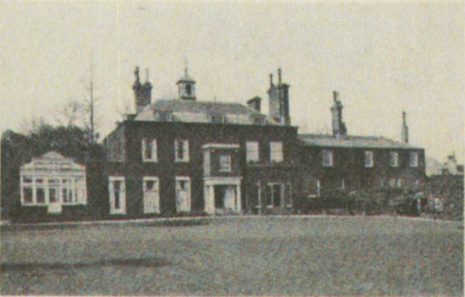
View of Bell House from the garden.
The Wissmann Prize was founded by Mrs Wissmann in memory of her husband, John Wissmann, who was at the College from 1903 to 1909. His parents lived at Bell House, College Road which later became a College boarding house. He became a Lieutenant in the Royal Field Artillery and was killed in action in 1914. Initially the prize was awarded to the member of the Army Class who obtained the highest marks in the entrance examination for Woolwich or Sandhurst. As the College no longer has an Army Class, the award goes to a pupil entering the Army straight from the College.
Founded in 1921, the Kittermaster Memorial Prize is given to the most outstanding cadet in the Army Section of the CCF. Captain A.N.C Kittermaster, was a much loved Classics master from 1896 to 1916 and Commanding Officer of the College OTC, 1903 -1915. He wrote poetry and songs including an alternative school song, Carmen Alleyniensium, in November 1911. He was killed in action in Mesopotamia in April 1916. The following year the College Governors agreed to put up a memorial tablet to him in the Lower Hall, which now hangs in the Common Room, and his verses were published as School Songs etc. in 1918.
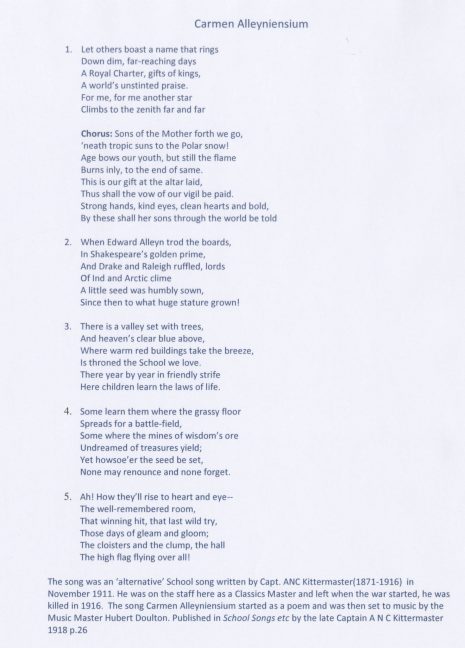
The alternative School Song by Captain ANC Kittermaster 1911
Charles Patrick Tanner (1892-1917) was at Dulwich College 1905-1911. He was on the Classical Side and played in the 1st XV. He went to Keble College, Oxford, with a Scholarship in Classics. At the outbreak of the First World War he joined the 9th Service Battalion, South Wales Borderers as a 2nd Lieutenant. In April 1916 he went to France and joined the Machine Gun Corps rising to the rank of Captain. He was killed in action on 30 November 1917 at Marcoing. In 1974 S E Lanfear, his cousin left money in his will to found a scholarship for a pupil from St John the Evangelist Church of England School, Penge named after Tanner and known as the CP Tanner Memorial Scholarship. It is now awarded for entry to the College at 11+.
The Harrison Edkins Memorial Prize for Music was originally called the Harrison Edkins Violin Prize and is still awarded for proficiency in violin playing. The prize was founded in 1919 by Mr and Mrs Edkins in memory of their son who was at the College from 1909 to 1915 and was passionately fond of music. He served with the 21st Battalion London Regiment (First Surrey Rifles) and was killed while leading his platoon in September 1916.
The B. L. Brown Science Prize did not come directly out of the First World War, but it is connected. Bernard Loftus Brown was born in 1896 the son of Albert Loftus Brown and Mabel Kathleen Brown He came to the College from Dulwich College Prep School in 1909. He left in July 1914 from the Science Remove and went straight to the Royal Military Academy at Woolwich. As a 2nd Lieutenant in March 1916 he went to France with the Royal Garrison Artillery and was invalided in January 1917. He returned to France in April and on 1 July 1917 was promoted to Lieutenant. In December 1917 he won the Military Cross ‘when an observation post could not be found he located and occupied one in a village under heavy fire, and endeavoured to establish and maintain communications’. But he then had a bad riding accident resulting in a head injury, so he was put on to Home Service until October 1918 when he returned to Flanders. In April 1919 he was sent to Fermoy in Ireland as an adjutant in the army of occupation. In October 1920 he and a fellow officer, Lieutenant RA Rutherford, dressed in civilian clothing but armed, left their barracks in Fermoy on their motorbikes for a trip to Killarney. On 15 November 1920 their disappearance was reported in the Evening News. It was not until the 22 August 1921 that their names appeared on a list in the Irish Times under ‘missing’. This was because Brown’s motorcycle had been found in March in a barn during an arms raid. In late November 1921 the British Government accepted a Sinn Féin statement that they had executed Brown, Rutherford and three others. Up to that point Bernard’s father, Albert, had been hoping he would be found alive. Sinn Féin justified their actions on the grounds that both Rutherford and Brown were intelligence officers and they shot them as enemy spies. The army admitted at an inquiry into their disappearance in February 1921 that they had been ‘occupied in operations against Sinn Féin’. It later transpired that they had chosen the day of an IRA funeral to set out on their trip. Although they were on leave their motorcycles and equipment proclaimed them as British Army Officers in a staunchly Republican area. While in the Army, Brown had attended a course at the Army Science College in July and August 1920. Perhaps in furtherance of this interest, the Brown family established the Science prize at Dulwich College in their son’s name. They also created the Bernard Loftus Brown Prize for Practical Nursing at the Royal College of Nursing. It is awarded to the nurse gaining the highest number of marks in each of the Final Practical Nursing Examinations.
Beyond the College we know of three prizes named for Old Alleynians who were killed in the First World War. The Oldfield Scholarship at Lincoln College is awarded to those intending to becoming barristers after leaving Oxford. It is named after Captain Laurel Cecil Francis Oldfield, who was at Dulwich College 1899-1903. After leaving Dulwich Laurel went up to Lincoln College, Oxford, where he read Natural Sciences. After graduating he studied law at the Inner Temple, and was called to the Bar in 1910. In 1914, he enlisted in the Inns of Court OTC, before taking a commission in the Rifle Brigade. He served in France where he was killed in action during the battle of Loos on 25th September, 1915.
The Laurence Minot Trophy was founded in May 1926 by the Air Ministry and is still awarded annually by the RAF. The trophy, in the shape of a large silver eagle, stands approximately 3½ feet in height. It was originally donated anonymously but was in fact commissioned by Minôt’s father in memory of his only son, Laurence Minôt, who was at Dulwich College 1909-1915. He went to Hall’s Flying School, based in Hendon, and qualified as a pilot in the summer of 1915. In October Laurence, was commission in the Royal Flying Corps and served in France and won the Military Cross. He was killed on 28 July 1917, when his plane was shot down over Meulebeke. The award has had a chequered history. It was originally awarded in a competition held between bomber squadrons of the Air Defence of Great Britain, which came in the Wessex Bombing Area — the precursor of Bomber Command. Wing Commander Charles Portal, commander of No. 7 Squadron, won the trophy in its initial year of 1927, and then again in 1928 when he dropped his bombs to within 27–37 metres of the target. From 1930 until 1936, the competition was confined to night bombing squadrons in home commands, and was then in abeyance until revived in 1949, when it was awarded to the Bomber Command squadron showing the best all-round excellence in training throughout the year. The annual awards gradually petered out in the late 1950s. In 2011 the trophy was found to be at the official residence of the Chief of the Air Staff, and at their request was transferred to the Officer’s Mess of No. 57 Squadron at RAF Wyton. In August 2013 No. 57 Squadron also acquired Captain Minôt’s Military Cross, presented to them by one of his last remaining relatives. No. 57 Squadron are now based at RAFC Cranwell and are responsible for the Elementary Flying Training (EFT) of new pilots. At the end of each course, prizes for various endeavours and achievements are awarded and the Laurence Minot Trophy is currently awarded to the student who ‘displays the Spirit and Ethos that Best Embodies 57 Squadron’.
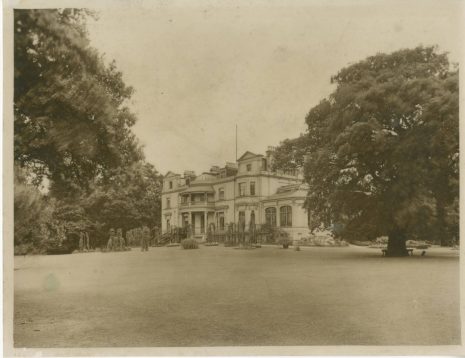
Belair House from the garden, 1933
The Eric Evan Spicer Scholarship at Trinity College Cambridge was created in honour of the youngest son of Anabelle and Evan Spicer. The Spicer family were very much part of Dulwich, they lived in Belair House and Evan Spicer served both as a College and a Dulwich Estate Governor. Eric came to the College in 1906 after preparatory schooling at Brightlands on Gallery Road. He left the College in 1912 and went up to Trinity College, Cambridge. In January 1915 Eric gained a commission in the 1/4th Battalion London Regiment and spent nearly two years in England. Eventually he was sent to France and on 28th March, 1918, Eric, along with many of his battalion, was lost, when the British outpost he was commanding at Oppy, near Arras, was overwhelmed by a German attack. In 1925 the scholarship was awarded to another Old Alleynian, William Keith Chambers Guthrie (1906-1981). Guthrie is best known for his History of Greek Philosophy which he published in the last twenty years of his life. He was Laurence Professor of Philosophy at Cambridge from 1952-73 and Master of Downing College from 1957-72.
Through these awards the sacrifice of these men live on, perpetuating their memories not only at Dulwich College but in the wider world.